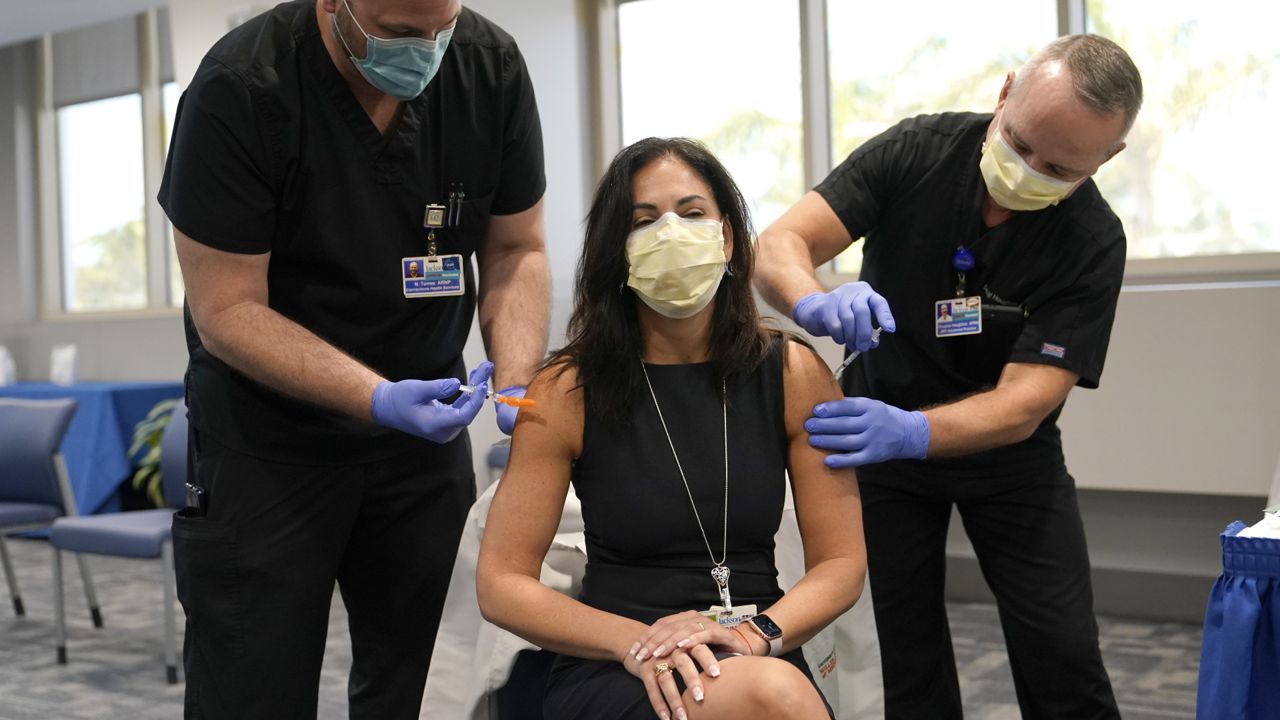Health officials are urging Americans to get both their COVID-19 and influenza vaccines, saying it is “safe and effective” to get both jabs at the same time.
Dr. Rochelle Walensky, director of the U.S. Centers for Disease Control and Prevention (CDC), on Wednesday stressed that vaccinations are not just needed for protection against COVID-19, but that they are “also important for preventing other infectious diseases, especially influenza or flu.”
“Just like with COVID-19, we need as many people as possible to be vaccinated for influenza, so that we can provide protection for those who are at most risk, such as adults who are over 65, those of any age who have chronic health conditions such as asthma, heart disease or diabetes, and children, especially under five, who are at risk of severe complications from the flu,” Dr. Walensky said during a virtual press briefing.
As of Tuesday, around 216 million Americans, or around 65% of the total population, are fully vaccinated against COVID-19, according to CDC data. As of Sept. 24, just over 100 million doses of the flu vaccine had been distributed nationwide.
The CDC will begin publishing a weekly influenza surveillance report beginning Oct. 15 through the rest of the flu season.
Walensky noted that the 2020 flu season was far less deadly than in years past, mostly due to public health measures like mask-wearing and social distancing that were implemented to stop the spread of COVID-19.
But now, officials are concerned that the reduced exposure may have limited immunity among the general public, and are warning of a “potentially severe flu season this year” — all the more reason to get vaccinated against both diseases.
As flu symptoms can be similar to those caused by COVID — namely, fever, chills, muscle ache, fatigue and headaches — increased cases may lead to the need for more testing at schools and other public locations.
Demand for COVID-19 tests, particularly rapid at-home kits, has outgrown supply in much of the U.S., particularly as schools have reopened this fall. The Biden administration announced earlier Wednesday a $1 billion investment aimed at quadrupling the amount of available tests by next summer.
A more concerning possibility is that flu hospitalizations could begin to rise, even as COVID-19 illnesses and hospitalizations have begun to decrease in recent weeks. That could lead to further strain on the nation’s already-struggling health care system, as officials “continue to see many hospitals and intensive care units across the country at full capacity.”
The flu can cause anywhere from 140,000-710,000 hospitalizations and can claim between 12,000 -52,000 lives in any given year, per the CDC. Since Aug. 2020, over 3 million Americans have been hospitalized from COVID-19, and over 704,000 Americans have died from the disease.
While peak flu season varies by year, cases typically start to rise during October, with the highest caseloads generally reported from December to February. According to the CDC, confirmed cases of the flu are currently low.



